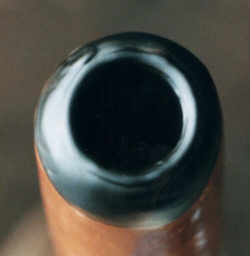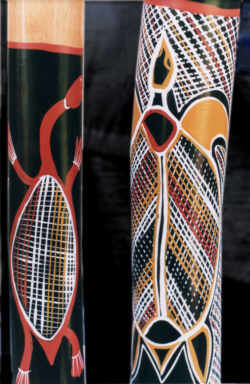
Choosing a Didgeridoo
At first, buying a didgeridoo may seem very straightforward. Although it's not a complex procedure, there are a few considerations we recommend you make. You need to be sure that your instrument will fulfil all your individual requirements.
Instrument Purpose
"Do I want my didgeridoo to be a functional, playable musical instrument, or an ornament only?" This is the first question you need to ask when considering your purchase.
Length and weight
Modes of transport and frequency of intended travel may influence the length and/or weight of the instrument you decide to purchase. Length and weight are also closely related to the key and timbre* of the didgeridoo, thus all related factors must be weighed up and prioritized before an informed decision can be made. It is a good idea to protect your didgeridoo with a hard or soft case if you intend to travel.
*Timbre is the musical character or tonal quality of an instrument.
What Musical Key?
The 'key' or 'note' of a didgeridoo will affect its compatibility with the key or note of the music it is to be played with. The key of an instrument is closely related to its length. For example, a C or a D keyed didgeridoo would be more compatible when played with the guitar than other notes.
Mouthpiece Type
There are two basic options when choosing your didgeridoo mouthpiece type:
- Hand carved wooden mouthpiece
Very durable and excellent for the musician who knows their own individual size specifications. The disadvantage of a wooden mouthpiece is its static nature, i.e. its size and shape cannot be easily changed.
- Hand moulded bee's wax mouthpiece
This less durable option has the great advantage of pliability. The flexibility of size and shape in a bee's wax mouthpiece is very user-friendly for the novice who may not yet know the optimum diameter that suits their playing. This by far the most popular option.


Didgeridoo Artwork

- Aboriginal Artwork On Your Didgeridoo:
The didgeridoo is an icon of the Australian Aboriginal culture. It therefore naturally follows that any Indigenous style artwork appearing on a didgeridoo should be a harmonious and compatible part of this cultural icon. An equally important factor to consider is the authentic Indigenous origin of the didgeridoo artwork. The ever- increasing investment value of genuine Aboriginal artwork on your didgeridoo is another factor to consider when making your choice.
- The Woodgrain Look On Your Didgeridoo:
When buying a didgeridoo with the intention to play (or learn to play), it is important to remember that artwork will not make it sound any better. If the sound quality of your didgeridoo versus money spent is a major factor in considering your purchase, then the woodgrain option is an attractive choice.
Didgeridoo Price and Sound Quality
As a general rule, the sound quality of a didgeridoo is related to its value. This will be most applicable when considering the purchase of high quality musical level instruments. That said, artwork, asthetics and authenticity are also factors influencing the final price tag.
Protection of Your Didgeridoo Against Damage After Purchase
Although this is not an immediate consideration for the buyer, it is an important one for the future. The didgeridoo, like any other musical instrument is a delicate, beautiful and functional piece of artwork. Protection of your valuable didgeridoo investment is essential for its preservation, especially for the traveller.
